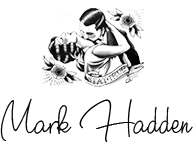Recently I have been asked a few times by other wedding photographers about my process when it comes to editing on Adobe Lightroom. People ask "what presets are you using?", "or how do you get that look?" etc etc. This is such a long answer but I am gonna try to break it down. Its taken me a very long time and numerous hours on every project trying to get a look that I am happy with.
Before I get into it, if youre just getting started out or if you need some new inspiration for your editing process, this is a great article by the people at SHOOTDOTEDIT. You can see the article here: HOW TO EDIT WEDDING PHOTOS
I picked up a couple of tips from this article myself and it might be good to watch before you delve into what I have to say.
So lets get going and take a look at the following image and break it down.
Click the image to open up the lightbox so you can see the lightroom basic panel a little clearer if you like.
You will notice that the contrast is super low on the main panel. This is because in the curves panels, that you can see below, there is quite a lot of contrast added in the RGB channel and also in each of the Red, Green, and Blue Channels. These contrast curves I inherited a long time ago when i was using a Kodak Portra preset. The red, green and blue channel curves make a start to the colour tone of the image and i use these for almost all of my images. The RGB curve has a very slight fade to the shadows, mid tones are brought up and the highlights are faded quite a bit to soften the overall highlights in the images.
The next thing to think about is global adjustments and more refined ones when it somes to dark and light in the images. The way I think of it is that the basic panel are more like global adjustments of brightness and contrast. The adjustment sliders below the curves panel give a much more pleasing and controlling way to adjust the light, middle and dark parts of the images. Look at the histogram of the image in the curves panel and you can see where the dakest and lightest parts of the image are. So you can adjust each of the 4 segments independently to further refine each part of the image, in terms of light: bring up the darkest shadows, crush the highlights etc. See below image to show what I mean and pay attention to the adjustment points compared to the histogram.
The clarity and dehaze sliders also adjust contrast but in different ways so play around with minor adjustments to them and see how they affect the images youre working on. I like to bring them down a little sometimes to give a super softness to some portraits for example, like in the image below. Clairty really affects edge definition and dehaze is I guess a bit of adobe magic with a special kind of contrast adjustment, but I like it.
The next thing I look at is the split toning panel. Using this panel is a great way to add a bit of colour to the highlights and the shadows. For example you might want to add a bit of blue to the highlights and a bit of brown to the shadows. This is what I did for the image at the top of this post. Here is the panel for that image below. Notice that its very small amounts of colour, very subtle in the final image. A great way to to try this out is to take an image with a bright soft white/grey sky and try to apply a subtle pink highlight tone with a value of about 350, then try with a blue highlight tone with a value around 200.. Play around with the amount but keep it subtle.
Finally there is the colour calibration panel at the very bottom. This for me was also inherited a long time ago from one of the Kodak Portra presets. I just made some minor adjustments to get the colours more suited to my Sony A7Riii/A7iii files.
So the question: "what presets do you use?". The answer... I dont really. Except that some of my own were originally based on one or two that I liked the colours of. Now I just have a basic starting point for each image.. No image is a one click preset for me. Usually I make a starting point for an image set on one image I like and go from there. The key thing for me is that the curves and calibration panels are mostly the same through all the work now. Everything else is adjusted per project.
I hope this helps some of you out there and if there is anything that you want to add then please do so in the comments below.






